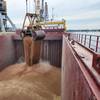Frieght Cost Set to Rise Due to IMO 2020
With less than ten months before the IMO 2020 regulation on sulfur oxide emission goes into effect Jan 1, carriers and shippers alike are facing an 'uncomfortable uncertainty' over its potential effects on costs and freight rates as they enter the 2019-2020 trans-Pacific contracting period.
The International Maritime Organization 2020 (IMO 2020) regulation on sulfur oxide emission will translate into an increase in freight rates, said Seabury Maritime, the global maritime and transportation investment & merchant banking and industry advisory firm, in a whitepaper.
The IMO 2020 regulation mandates the reduction of sulfur oxide emission from 3.5 percent m/m to 0.5 percent m/m.
“The 2020 deadline to reduce sulfur oxide emissions is one of the most significant regulations impacting liner shipping in recent memory,” commented Seabury Maritime Vice President Nikos Petrakakos. “With fuel costs already representing more than 50 percent of total operating expenses, the IMO 2020 poses an increase too significant for carriers to absorb and stay operational.”
Based on Seabury Maritime’s analysis produced in cooperation with Gemini Shippers Group, “What today costs approximately USD 1,600 to ship a container from China to the USEC, will now cost USD 600 more after the IMO 2020 regulation goes into place. Shippers should be prepared to share in the risk of changing fuel prices through the assessment of reasonable and transparent fuel-surcharge calculations.”
The whitepaper details that the lack of industry standard for fuel-surcharges computation or a clear picture of the underlying costs for low-sulfur fuel allows participants to only roughly estimate its economic impact. Several factors affecting a carrier’s calculation of the fuel surcharges add complexity, making transparency ever so paramount to building trust on both sides.
Kenneth O’Brien, Chief Operating Officer of Gemini Shippers Group, commented: “Through our collaboration with our partners at Seabury Maritime, we have identified the inherent risks and cost drivers represented by the IMO 2020 regulation. Our desire to add transparency to the issues will help shippers and carriers alike navigate the 2019-2020 contracting season.”
Petrakakos further elaborates that “the intention of this whitepaper is to promote open dialogue between carriers and shippers by providing insight and a general understanding around metrics used behind bunker calculations.”
“Transparency is key to creating trust that the carriers are truly just passing these new costs in an equitable way. Most fuel data may seem like an important trade secret, but more transparency can actually lead to deeper relationships and less pushback from rightfully suspicious customers, while better highlighting carriers’ efforts to improved fuel efficiency and lower costs as a result. Lack of clarity can even cause undue blowback to carriers in some cases, simply because of the lack of understanding of the metrics, a self-inflicted wound for carriers,” concludes Petrakakos.













